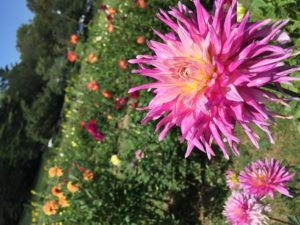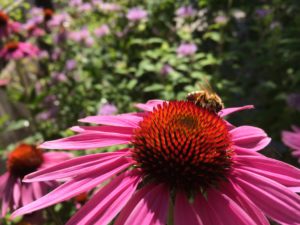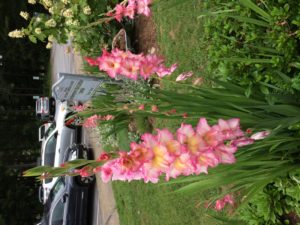Gardening for Cut Flowers
go.ncsu.edu/readext?718270
en Español / em Português
El inglés es el idioma de control de esta página. En la medida en que haya algún conflicto entre la traducción al inglés y la traducción, el inglés prevalece.
Al hacer clic en el enlace de traducción se activa un servicio de traducción gratuito para convertir la página al español. Al igual que con cualquier traducción por Internet, la conversión no es sensible al contexto y puede que no traduzca el texto en su significado original. NC State Extension no garantiza la exactitud del texto traducido. Por favor, tenga en cuenta que algunas aplicaciones y/o servicios pueden no funcionar como se espera cuando se traducen.
Português
Inglês é o idioma de controle desta página. Na medida que haja algum conflito entre o texto original em Inglês e a tradução, o Inglês prevalece.
Ao clicar no link de tradução, um serviço gratuito de tradução será ativado para converter a página para o Português. Como em qualquer tradução pela internet, a conversão não é sensivel ao contexto e pode não ocorrer a tradução para o significado orginal. O serviço de Extensão da Carolina do Norte (NC State Extension) não garante a exatidão do texto traduzido. Por favor, observe que algumas funções ou serviços podem não funcionar como esperado após a tradução.
English
English is the controlling language of this page. To the extent there is any conflict between the English text and the translation, English controls.
Clicking on the translation link activates a free translation service to convert the page to Spanish. As with any Internet translation, the conversion is not context-sensitive and may not translate the text to its original meaning. NC State Extension does not guarantee the accuracy of the translated text. Please note that some applications and/or services may not function as expected when translated.
Collapse ▲ Despite being a horticulturist, I really had never gotten excited about cut flowers, being mostly a trees and shrubs kind of guy. Oaks, maples, tulip poplars, and buckeyes were my kind of thing until my wife entered into my life. Now you will find a vase or two of seasonal colors in our house all year long. Today, I couldn’t imagine a home or special gathering without cut flowers and a garden full of plants that can provide them.
Despite being a horticulturist, I really had never gotten excited about cut flowers, being mostly a trees and shrubs kind of guy. Oaks, maples, tulip poplars, and buckeyes were my kind of thing until my wife entered into my life. Now you will find a vase or two of seasonal colors in our house all year long. Today, I couldn’t imagine a home or special gathering without cut flowers and a garden full of plants that can provide them.
Any garden design and environmental situation is suited to grow cut flowers and decorative foliage in all seasons, from forced forsythia flowers in late winter to airy bunches of wildflowers in the heat of summer. Whether your garden is in full sun or shade, has irrigation or not, or has good or bad soil you can maintain a ‘cutting garden’ year-round. The key is to plant a mix of annuals, perennials, shrubs, and trees that are suited to your situation that will flower or fruit at different times. Following is a partial list of plants that lend themselves well to providing you with seasonal bouquets. Remember that the fruits and foliage of some trees and shrubs can provide arrangements just as lovely as a profusion of showy flowers.
Plants for Cutting Garden
- Hydrangea quercifolia, Oakleaf Hydrangea – a native shrub with white football-sized flower clusters
- Callicarpa Americana, American Beautyberry – a native shrub with purple berries in the summer
- Lilium longiflorum, Easter Lily – a early spring stemmed flower
- Hemracolis spp., Daylily – There are many color variations of this tuberous flower. Each flower lasts one day.
- Iris xiphium, Dutch or Bearded Iris – One of Grandma’s favorites, the tall flower stems of this plant can stand alone in any vase.
- Rudbeckia hirta, Black Eyed Susan – Sunflower-like yellow flowers bring the summer inside.
- Lantana camara, Lantana ‘Miss Huff’– This shrubby plant has multicolored flower clusters on woody stems.
- Ilex verticillata, Winterberry – Red berries cover the stems of this deciduous holly in the dead of winter.
- Forsythia x intermedia, Forsythia – The stems of this yellow flowering shrub can be used as a late winter vase filler.
- Leucanthemum vulgare, Oxeye Daisy – These perennial white daisies bloom in profusion in June and July.
- Echinacea sp., Coneflower – Tall and striking, coneflowers make a bouquet by themselves
- Others: Sedum, gladiolas, crocosmia, hydrangea, peonies, dahlias, and wildflower mixes
Keeping your plants flowering for as long as possible is a second key to having a consistent variety of cutting material. Annuals and perennials benefit from ‘deadheading’ or removing spent flowers. Pinching off old flowers stimulates herbaceous plants to produce more blooms for longer periods of time. Be sure however to leave the very last set of flowers if you wish to collect seed.
Flowering and fruiting shrubs and trees benefit from pruning at the appropriate time. Plants such as hydrangea and forsythia should be pruned in early summer after flowering. Shrubs such as hollies and butterfly bushes benefit from an early spring pruning to stimulate new shoot growth. Proper fertility keeps plants growing vigorously and provides new shoots, flowers, and fruit with the extra nutrients they need to really put on a show. If properly maintained, a cutting garden can provide you with cut flowers, foliage and decorative fruit for your arrangements year-round, and enjoyment far in excess of the gardening effort required.







